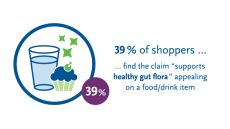Beverage color affects taste perception, reveals new research
according to new research, which claims to be the first of its kind
to examine how attributes such as color, price or brand can impact
consumer preferences.
Published in next month's issue of the Journal of Consumer Research, the new study aimed to examine to what extent peoples' taste perception is affected by certain marketing cues. "Perceptual discrimination is fundamental to rational choice in many product categories yet rarely examined in consumer research," wrote researchers JoAndrea Hoegg of the University of British Columbia and Joseph Alba of the University of Florida. "The present research investigates discrimination as it pertains to consumers' ability to identify difference – or the lack thereof – among gustatory stimuli," they added. The researchers manipulated the color of orange juice by adding food coloring, as well as the product's sweetness through the addition of an artificial sweetener. The modifications were designed to be just noticeable. According to the results of the tasting experiments involving 60 to 150 undergraduate students, the color of the juice dominated taste. "Two items that tasted the same but were different colors were perceived as more distinct in taste than two items that actually tasted different but were the same color," Hoegg told FoodNavigator-USA.com. "This was not the case for brand labels or price labels. This is important because lots of prior research has shown that brand labels have enormous influence on taste preference, so the relative influence is important from a marketing research perspective," she added. In another experiment, the researchers labeled cups with two different brand names – a high quality brand and a generic store brand. The juice in both samples was identical. Cups of same tasting but different colored juices were also presented. Participants were asked to indicate which product they preferred (preference rating), as well as which of the items had the biggest difference in taste (discrimination rating). The findings revealed that people preferred the samples that had brand labels over those that had different colors. However, they noticed a bigger difference in taste when the samples had different colors rather than when they had different labels. According to Hoegg, this indicates that discrimination is not necessarily a prerequisite for preference. "Most previous research in marketing that studies the effects of brand labels or other cues has focused on preference," she said. "There has been an implicit assumption in that kind of research that discrimination is a natural prerequisite for preference. But preferences can be developed by many things such as what your parents used to use, what your friends use, what kind of advertising you see, etc. Our research suggests that the link between discrimination and preference is not as simple as previously assumed." The researchers also said their results were not due to consumers' expectations that there is more difference in taste between samples that are different color than samples from different brands. "We found no difference in how much taste difference people expected, which suggests that the color influence is perceptual," said Hoegg. Source: Journal of Consumer Research Volume 33, March 2007 Authors: JoAndrea Hoegg and Joseph Alba





















